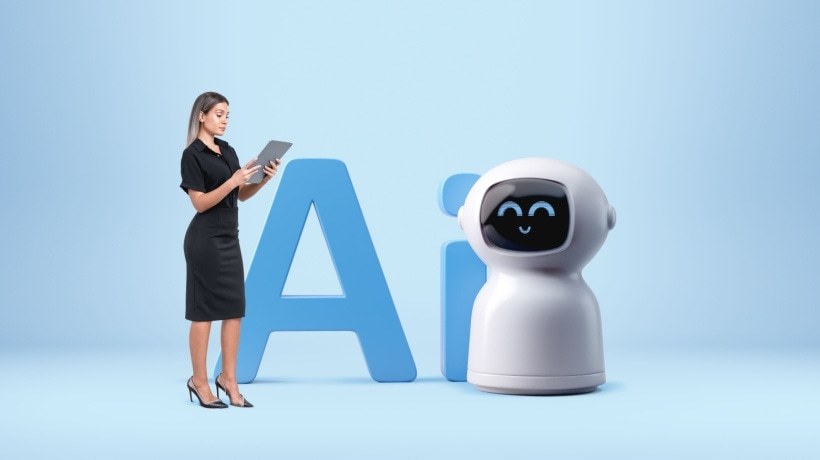Self-Directed Learning To Train Millennials
People are natural learners. One of our strongest skills is that we are excellent at directing our own learning (even if we aren’t always aware we’re doing it). Arguably the most difficult thing we ever learn is our first language and we learn it entirely by choosing our own path, seeking feedback to fix our early mistakes, celebrating our own quick wins, and adding social components at every opportunity. In other words: We take full advantage of our natural born ability to direct our own learning. Not surprisingly, when we direct our own learning, we are more engaged in the topic, we’re more successful in our learning outcomes and we’re also more likely to put that learning into practice. This is exactly why workplace training projects that take advantage of self-directed learning have such positive results. The trend toward the use of mobile applications for training is well aligned with putting the learner in the driver’s seat and mobile learning is an exciting way for Chief Learning Officers to explore this training opportunity.
Many of the digital natives and Millennials in today’s workforce are demanding this move toward a more self-directed approach to learning. As a group, they are comfortable with technology and have grown up using tutorials to discover and teach themselves everything from DIY projects to advanced coding languages. This growing sector of the workforce will be an increasing influence on the use of self-directed learning methods and therefore it is important for training directors to begin to offer the greater levels of flexibility and convenience that a self-directed learning project provides.
One of the first things a learning performance manager should understand is how to recognize the key behaviors of self-directed learners. These are characteristics that are increasingly being noted among Millennials and digital natives and can absolutely be incorporated advantageously into many types of training projects.
Characteristics Of Self-Directed Learners
- Self regulation.
They find it easy to set their own learning goals. - Structuring their learning.
They are able to create their own learning activity schedules and are responsible about sticking to them. - Self supportive.
They seek out the necessary resources to support their learning and they excel at discovering new avenues for finding high quality supplementary material and independent learning assets. - Self assessment.
They regularly (and honestly) evaluate their own learning and seek to improve their skills and expertise.
One of the most important considerations for training support teams is to cultivate more self-directed learners. Choosing good learning management software that incorporates the use of mobile learning and is designed so that learners have more control over setting their own goals and learning schedules is a great first step.
Another way that learning directors can support self-directed learners is to consider them when they are designing the learning outcomes of a project. If we think of learning achievement in just three categories (and there are clearly more), it can help align projects with self-directed approaches. Keep in mind that each category is further defined according to industry, work role and other factors. The minimum proficiency for a radiology technician differs greatly from that of an automotive parts assembly worker. However, the general categories exist regardless of area and are:
- Minimum proficiency.
Setting a minimum proficiency standard helps create an excellent first target for self-directed learners. If you are incorporating an active learning component in your training project, it is helpful to be clear about the minimum activity you would consider a learner must perform to achieve proficiency. For example, if there is an exercise to complete, the minimum proficiency could be set with respect to the time it takes to complete this, as well as a minimum achievement and even a repetition of task. - Competency.
Self-directed learners require frequent feedback that helps them assess where they are on their path toward expertise. Many Millennials appreciate the freedom that independent learning provides, but they are also interested in understanding when they are approaching a level of competency, which is above a minimum proficiency. Competency is usually framed with respect to how they can be expected to put their learning into practice and it is important to frame competency statements in active voices such as “a learner will achieve competency when they are able to demonstrate an ability to perform and deliver a project” (a very general example). - Expertise.
For the generations who grew up gaming, expertise is the ultimate quest and a reward in and of itself. As with each of these achievement categories, the definition of expertise is highly related to the industry and work role. However, the more that training managers can tie learning outcomes to expertise, the more they will find that their training projects engage self-directed learners.
If you are responsible for managing the training of Millennials, you will not be surprised to discover that they are also called the “measured generation”. Millennials and digital natives are comfortable using technology to gather feedback that they believe can help them live better. They use apps to help them choose optimal exercise routines and to plan the healthy meals that give them the energy for their active lives. They do not see technology as an invasion in their lives but, rather, as a complement to help them make the best use of their time and activities.
Choosing learning projects and software that supports the behaviors of successful self-directed learners includes opportunities for this group to measure and monitor their own success. The great news for learning managers is that self-directed learning can create a better use of training resources. However, be aware that quality content is key for successful self-directed projects. It is difficult for learners to become experts on content to which they do not relate so the role of training content development is essential. With quality engaging content, excellent delivery methods such as mobile learning, and a capable generation of digitally native learners, you will be sure to add self-directed learning projects to your list of favorite training activities.









